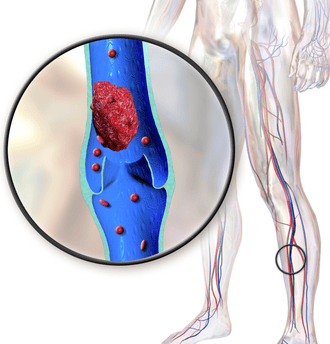Hughes-Stovin Syndrome: An Overview
Hughes-Stovin Syndrome (HSS) is a rare and potentially life-threatening disorder characterized by a combination of recurrent thrombophlebitis and pulmonary artery aneurysms. Named after British physicians John Patterson Hughes and Peter George Ingle Stovin, who first described the syndrome in 1959, HSS remains a poorly understood condition due to its rarity. Early diagnosis and prompt treatment are essential to manage the severe complications associated with the disease.
AUTOIMMUNE
Rishwin A R
12/24/20242 min read


Causes
The exact cause of Hughes-Stovin Syndrome is unknown. However, it is often considered a variant of Behçet's disease, sharing overlapping features such as vasculitis and aneurysm formation. The following factors may contribute to the development of HSS:
Autoimmune mechanisms: Immune system dysfunction leading to vascular inflammation.
Genetic predisposition: Familial links suggest a genetic component.
Environmental triggers: Infections and other external factors may play a role in triggering the condition in susceptible individuals.
Symptoms
Hughes-Stovin Syndrome presents with a range of symptoms, often progressing in stages:
Stage 1: Recurrent thrombophlebitis (inflammation of veins with clot formation).
Stage 2: Pulmonary artery aneurysms, which can lead to life-threatening complications such as rupture and massive hemoptysis (coughing up blood).
General symptoms: Fever, fatigue, weight loss, and chest pain are common in affected individuals.
Diagnosis
Diagnosing Hughes-Stovin Syndrome can be challenging due to its rarity and similarity to other conditions. A comprehensive diagnostic approach includes:
Clinical evaluation: Detailed medical history and physical examination.
Imaging studies:
CT angiography and MRI: To detect pulmonary artery aneurysms and thrombosis.
Ultrasound: For identifying thrombophlebitis.
Laboratory tests: Blood tests to assess inflammation markers and rule out other conditions such as Behçet's disease.
Treatment
Treatment of Hughes-Stovin Syndrome aims to reduce inflammation, manage thrombosis, and prevent aneurysm rupture. It often involves a multidisciplinary approach:
Medications:
Corticosteroids: To reduce inflammation.
Immunosuppressants: Such as cyclophosphamide and azathioprine.
Anticoagulants: To manage thrombosis, though use must be cautious due to the risk of bleeding.
Surgical intervention:
Endovascular procedures or open surgery may be necessary to repair or remove aneurysms.
Pulmonary artery embolization in cases of aneurysm rupture.
Prognosis
The prognosis of Hughes-Stovin Syndrome varies depending on the severity of the condition and the effectiveness of treatment. Early diagnosis and aggressive management are critical to improving outcomes. Without timely intervention, the risk of fatal complications, particularly aneurysm rupture, remains high.
Conclusion
Hughes-Stovin Syndrome is a rare but serious condition requiring heightened awareness among clinicians for early recognition and treatment. Advances in imaging techniques and therapeutic options offer hope for better management of this life-threatening disease. Ongoing research is essential to unravel its underlying mechanisms and improve patient outcomes.
FAQs
1. What is Hughes-Stovin Syndrome?
Hughes-Stovin Syndrome is a rare disorder characterized by recurrent thrombophlebitis and pulmonary artery aneurysms, often considered a variant of Behçet's disease.
2. How is Hughes-Stovin Syndrome diagnosed?
Diagnosis involves clinical evaluation, imaging studies like CT angiography and MRI, and laboratory tests to rule out other conditions.
3. What are the treatment options for Hughes-Stovin Syndrome?
Treatment includes corticosteroids, immunosuppressants, and cautious use of anticoagulants. Surgical intervention may be required for aneurysm management.
4. Is Hughes-Stovin Syndrome hereditary?
While the exact cause is unknown, genetic predisposition may play a role in its development.
5. Can Hughes-Stovin Syndrome be cured?
There is no definitive cure, but early diagnosis and effective treatment can manage symptoms and improve the prognosis.
Image Credit: "Deep Vein Thrombosis" by Blausen.com staff, 2014. Licensed under Creative Commons Attribution 3.0 Unported (CC BY 3.0).
Syndromes.xyz
Explore medical syndromes and their details here.
For Educational purposes only
The information on this site is not in any way, replacement for professional advice. Always consult your physician regarding personal queries
Connect
Support
syndromesxyz@gmail.com
© 2024. All rights reserved.
